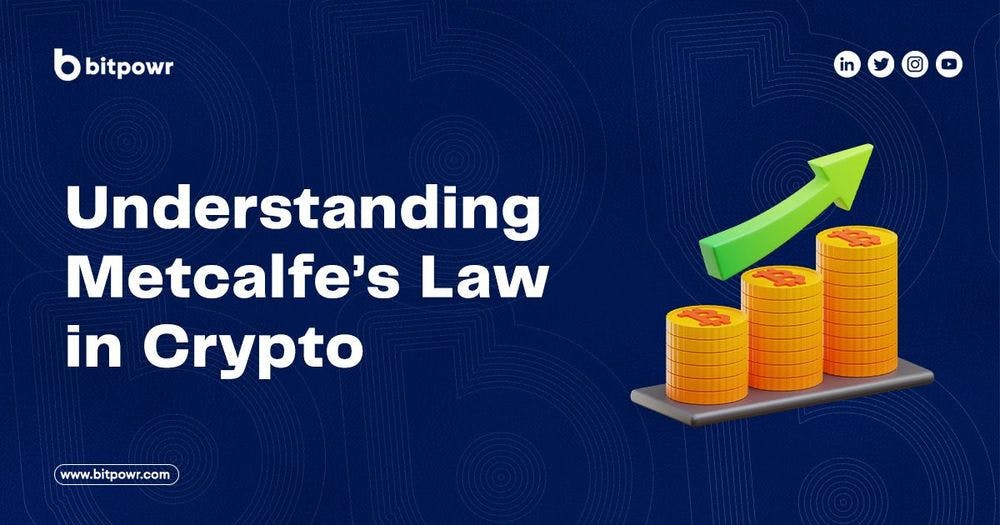Cryptocurrencies have taken the financial world by storm, revolutionizing how we think about money, transactions, and value exchange. Among the many theories and concepts that have gained prominence in the crypto space, Metcalfe’s Law stands out as a fundamental principle that helps explain the growth and potential of cryptocurrencies and their networks. In this article, we delve into the concept of Metcalfe’s Law and its relevance within the cryptocurrency ecosystem.
The Origins of Metcalfe’s Law:
Metcalfe’s Law is named after Robert Metcalfe, the inventor of Ethernet and co-founder of 3Com Corporation. He formulated this law in the context of network theory, specifically focused on the value of telecommunications networks. The law states that the value of a network is proportional to the square of the number of connected users in that network. In mathematical terms, if ‘n’ represents the number of users, then the value ‘V’ of the network can be expressed as V ∝ n².
Applying Metcalfe’s Law to Cryptocurrencies:
The principles of Metcalfe’s Law can be directly applied to the cryptocurrency space. In this context, the value of a cryptocurrency network is determined by the number of active users or participants within that network. As more users join the network, the potential for value creation and exchange increases exponentially.
Consider Bitcoin as an example. In its early days, the network had a relatively small number of users, and the value of a single Bitcoin was nominal. However, as more people became aware of the technology and began using it, the network effects kicked in. Each new user added to the network increased its overall value, making it more useful and attractive to others. This positive feedback loop can lead to rapid growth and adoption.
Network Effects and Positive Feedback:
Metcalfe’s Law is essentially a representation of network effects – the phenomenon where the value of a product or service increases as more people use it. In the context of cryptocurrencies, network effects are driven by several factors:
- Liquidity: A higher number of participants in a cryptocurrency network increases its liquidity. Liquidity is crucial for smooth trading and price discovery, making the network more attractive to traders and investors.
- Accessibility: As the number of users grows, more businesses and merchants are likely to accept cryptocurrency as a form of payment. This accessibility further boosts adoption.
- Innovation: With a larger user base, more developers and entrepreneurs are drawn to the network, fostering innovation. This can result in the creation of new applications, services, and use cases for cryptocurrency.
- Security: Network security can increase with more participants, as it becomes more challenging for any single entity to control the majority of the network’s computing power (in the case of proof-of-work cryptocurrencies like Bitcoin) or consensus weight (in proof-of-stake systems).
- Trust: A larger and more active community can enhance the network’s reputation and trustworthiness, attracting new users who might have been hesitant to join a smaller network.
Metcalfe’s Law and Altcoins:
While Metcalfe’s Law is often discussed in the context of Bitcoin, it also applies to other cryptocurrencies known as altcoins. The success of an altcoin is influenced by factors like technological innovation, use case, and market demand, but the network effects described by Metcalfe’s Law play a significant role.
New altcoins may struggle to gain traction initially due to the small user base, but as adoption grows, their value can experience exponential increases. Ethereum, for instance, managed to establish itself as a dominant platform for decentralized applications and smart contracts by leveraging the power of network effects.
Limitations and Considerations:
While Metcalfe’s Law offers valuable insights into network growth, it’s important to acknowledge its limitations. The law assumes that all connections within a network are of equal value, which might not always be the case in real-world scenarios. Additionally, the law’s application to cryptocurrencies doesn’t account for factors like market sentiment, regulatory developments, or technological vulnerabilities that can influence a cryptocurrency’s value.
In conclusion
Metcalfe’s Law serves as a guiding principle to understand the potential impact of network effects on cryptocurrency adoption and value. The growth of the crypto space is driven not only by technological advancements but also by the increasing number of participants in these networks. As the crypto landscape continues to evolve, keeping an eye on Metcalfe’s Law can provide valuable insights into the dynamics of network growth and the potential for value creation.




